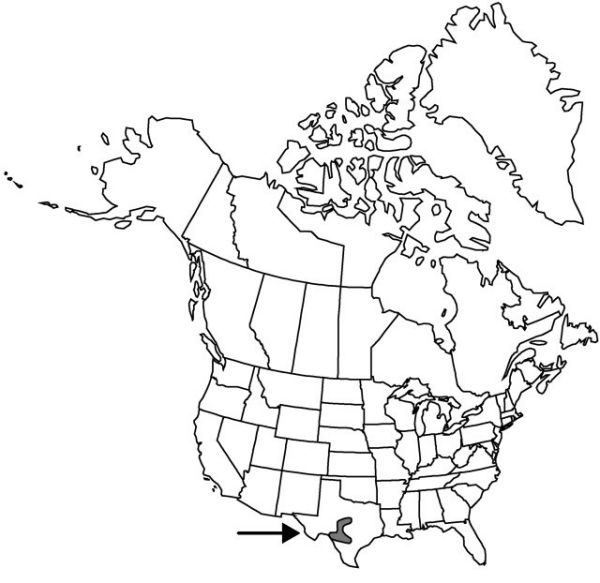Difference between revisions of "Yucca reverchonii"
Rep. (Annual) Missouri Bot. Gard. 22: 102, plate 108. 1911.
FNA>Volume Importer |
FNA>Volume Importer |
Revision as of 19:34, 24 September 2019
Plants solitary or forming dense, open colonies of rosettes, acaulescent, with branching subterranean caudices; rosettes 2–10 per colony, each rosette with fewer than 100 leaves. Leaf blade lanceolate, straight, slightly concave, nearly flattened, widest at middle, 25–60 × 1–2(–2.5) cm, rigid, slightly glaucous, margins denticulate, yellow or reddish brown, hyaline. Inflorescences narrowly paniculate, arising beyond rosettes, narrowly ovoid, 3.5–10 dm, densely pubescent; bracts erect; peduncle sometimes scapelike, 0.5–1.1 m, less than 2.5 cm diam. Flowers pendent; perianth campanulate; tepals distinct, white or greenish white, ovate, 4–6 × 1.5–3 cm, apex sharply acuminate; filaments 1.8–3.2 cm; pistil 3–4.5 cm × 4–6 mm; style white or greenish, 10–20 mm; stigmas lobed. Fruits erect, capsular, dehiscent, ellipsoid, 4–6 × 1.8–3.2 cm, dehiscence septicidal. Seeds dull black, thin, 5–7 mm diam.
Phenology: Flowering late spring.
Habitat: Rocky hillsides, limestone ledges, gravelly plains with dense brush
Elevation: 400–900 m
Discussion
Yucca reverchonii is endemic to the Edwards Plateau. J. M. Webber (1953) reported apparent hybrids of this species with Y. rupicola and Y. thompsoniana. S. D. McKelvey (1938–1947) indicated that Y. reverchonii occupies an area of the Plateau between those of Y. rupicola and Y. thompsoniana. K. H. Clary (1997) presented DNA evidence that confirms a close relationship among these three species as distinct entities.
Selected References
None.
